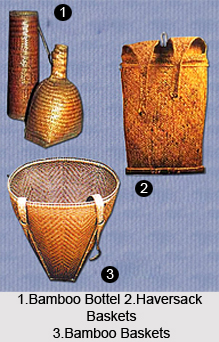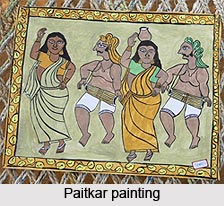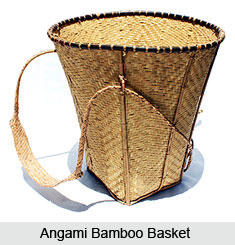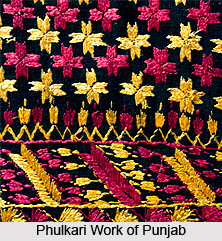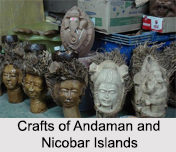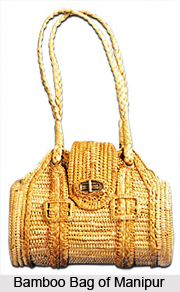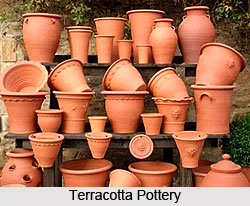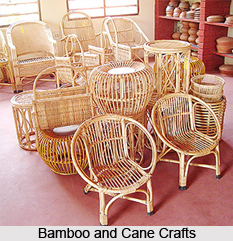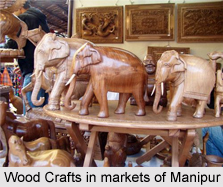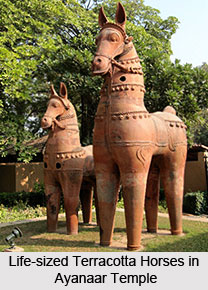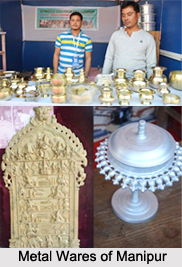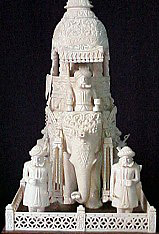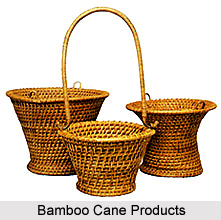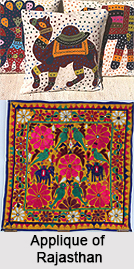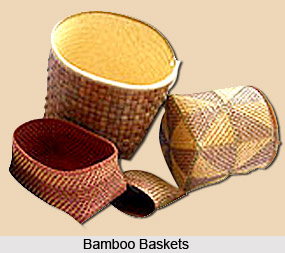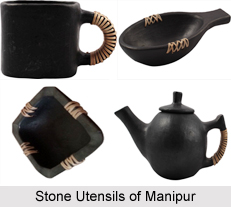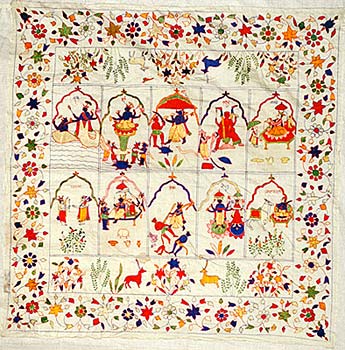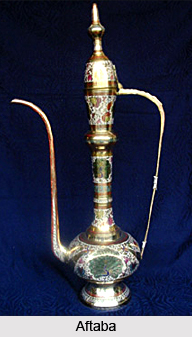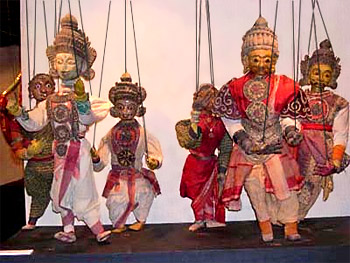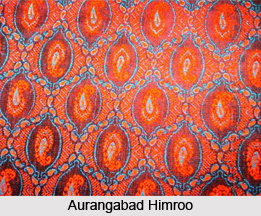 Himroo is one of the oldest fabric used as dress material by nobility. The word `Himroo` is derived from the Persian word Hum-ruh which means `Similar`. Himroo is the replica of the rich Kum-khwab which was woven by the pure golden and silver threads in olden days. It has its origin in the ancient style of weaving known as jamawar in Kashmir and was introduced to the south (in cotton) by the Mughals for the warmer climate. Himroo is brought to Aurangabad in the period of Emperor Mohammad Tughlaq, when he had shifted his capital from Delhi to Daulatabad. Aurangabad Himroo was used by the royal families. Himroo from Aurangabad is much in demand for their unique style and design.
Himroo is one of the oldest fabric used as dress material by nobility. The word `Himroo` is derived from the Persian word Hum-ruh which means `Similar`. Himroo is the replica of the rich Kum-khwab which was woven by the pure golden and silver threads in olden days. It has its origin in the ancient style of weaving known as jamawar in Kashmir and was introduced to the south (in cotton) by the Mughals for the warmer climate. Himroo is brought to Aurangabad in the period of Emperor Mohammad Tughlaq, when he had shifted his capital from Delhi to Daulatabad. Aurangabad Himroo was used by the royal families. Himroo from Aurangabad is much in demand for their unique style and design.
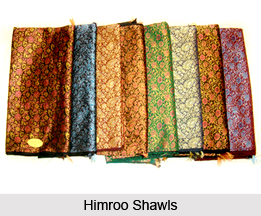
Himroo, the fascinating fabric from Maharashtra, is an extra-weft, figured fabric with a solid ground of satin or twill, decorated with figurative motifs and manufactured ordinarily from cotton and viscose rayon yarn on a cotton ground. It is also woven from silk yarn and gold thread on a silk ground. This special cotton brocade is woven on a throw-shuttle loom and has an art-silk or silk mix. It has a complicated technique of weaving. The design has to be decided at the outset since two kinds of threads are mixed. The designs are geometrical and floral. Intricate creeper designs are more popular in Himroo.
A luxurious extra weft figured fabric with a cotton base and a silk or art silk weave, himroo is ideal for rich stoles and furnishing material. The design are geometrical like circles, octagons, ovals, diamonds, hexagons and of fruits like pomegranate, almonds, pineapple; and of flowers like rose, lotus, jasmine, birds and animals; designs of flowering creepers, running designs formed with leaves and stems which interlock sometimes to form intricate patterns. This material is used for coats, cloaks, and shawls, as also for furnishings.
Procedure of making Himroo
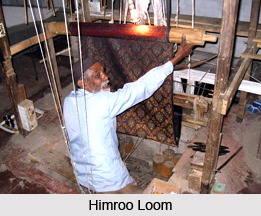 Himroo is a kind of a brocaded material woven on a simple throw-shuttle loom on the principle of the extra weft figuring with cotton used in the warp and art silk in the weft. In this preparation, the jala or design is most important. This is where initially the entire design is worked out, and prescribes where the extra weft silk yarn is to pass through some of the warp threads, which is the most complicated job. The jala consists of a bunch of threads, the number determined by the design, suspended from the ceiling. The threads being tied each to the threads below in a horizontal position by wooden supports. Twin loops hang to receive the warp threads on their way to the heads. When ready, it is attached vertically to the loom. The weaving consists in interlacing of the weft yarn with the warp at right angles.
Himroo is a kind of a brocaded material woven on a simple throw-shuttle loom on the principle of the extra weft figuring with cotton used in the warp and art silk in the weft. In this preparation, the jala or design is most important. This is where initially the entire design is worked out, and prescribes where the extra weft silk yarn is to pass through some of the warp threads, which is the most complicated job. The jala consists of a bunch of threads, the number determined by the design, suspended from the ceiling. The threads being tied each to the threads below in a horizontal position by wooden supports. Twin loops hang to receive the warp threads on their way to the heads. When ready, it is attached vertically to the loom. The weaving consists in interlacing of the weft yarn with the warp at right angles.
About Himroo shawls, the great adventurer Marco Polo once wrote of the fabric that was given to him in the Deccan region, "It is as fine as a spider`s web and Kings and Queens of any country will take pride in wearing it!"
